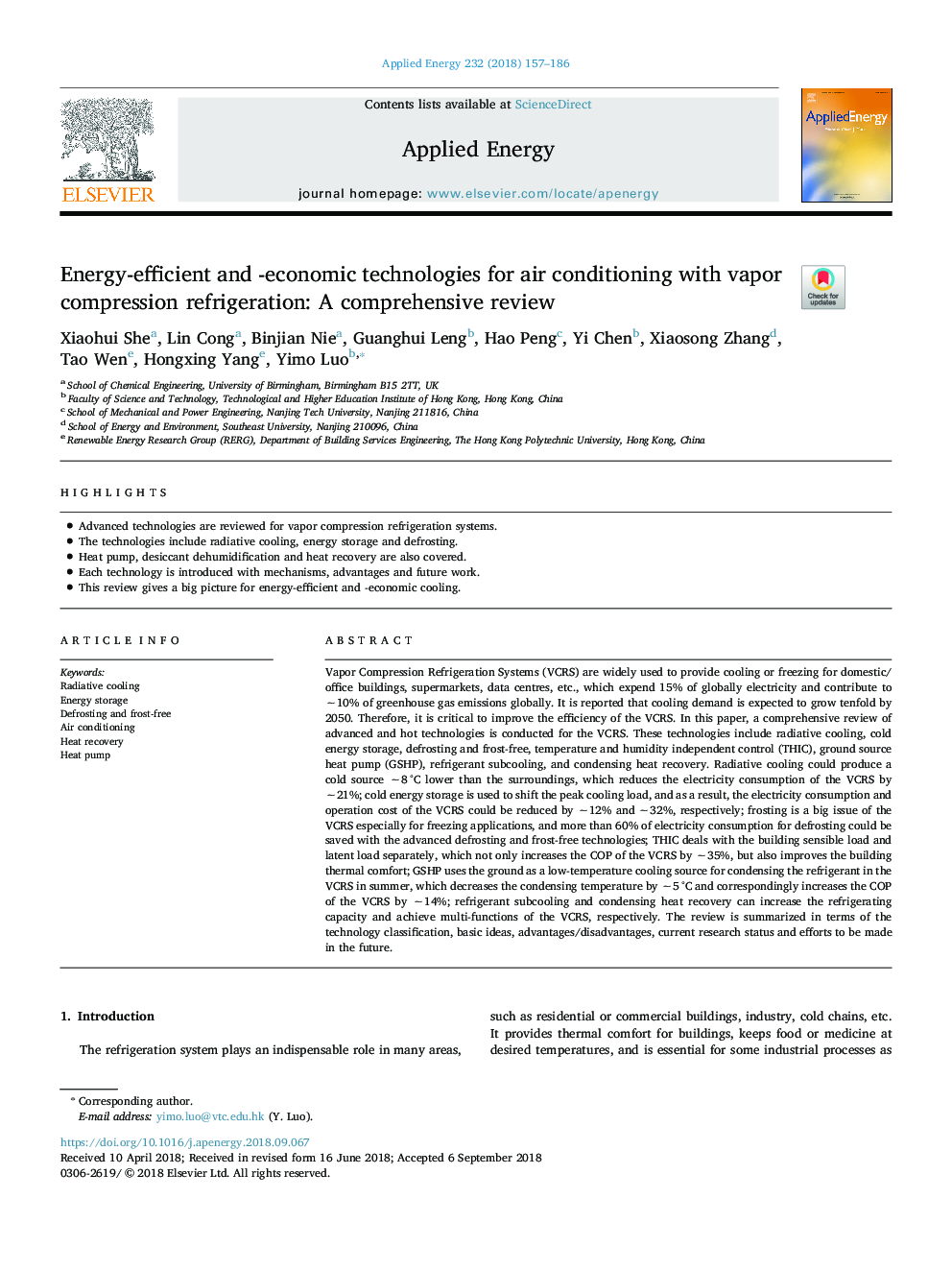| کد مقاله | کد نشریه | سال انتشار | مقاله انگلیسی | نسخه تمام متن |
|---|---|---|---|---|
| 11017546 | 1725872 | 2018 | 30 صفحه PDF | دانلود رایگان |
عنوان انگلیسی مقاله ISI
Energy-efficient and -economic technologies for air conditioning with vapor compression refrigeration: A comprehensive review
ترجمه فارسی عنوان
فن آوری های صرفه جویی در انرژی و اقتصادی برای تهویه مطبوع با تبرید کمپرسور بخار: یک بررسی جامع
دانلود مقاله + سفارش ترجمه
دانلود مقاله ISI انگلیسی
رایگان برای ایرانیان
کلمات کلیدی
خنک کننده شعاعی، ذخیره انرژی، خنثی کردن و بدون یخ زدن، تهویه مطبوع، بازیابی حرارت، پمپ حرارتی،
موضوعات مرتبط
مهندسی و علوم پایه
مهندسی انرژی
مهندسی انرژی و فناوری های برق
چکیده انگلیسی
Vapor Compression Refrigeration Systems (VCRS) are widely used to provide cooling or freezing for domestic/office buildings, supermarkets, data centres, etc., which expend 15% of globally electricity and contribute to â¼10% of greenhouse gas emissions globally. It is reported that cooling demand is expected to grow tenfold by 2050. Therefore, it is critical to improve the efficiency of the VCRS. In this paper, a comprehensive review of advanced and hot technologies is conducted for the VCRS. These technologies include radiative cooling, cold energy storage, defrosting and frost-free, temperature and humidity independent control (THIC), ground source heat pump (GSHP), refrigerant subcooling, and condensing heat recovery. Radiative cooling could produce a cold source â¼8â¯Â°C lower than the surroundings, which reduces the electricity consumption of the VCRS by â¼21%; cold energy storage is used to shift the peak cooling load, and as a result, the electricity consumption and operation cost of the VCRS could be reduced by â¼12% and â¼32%, respectively; frosting is a big issue of the VCRS especially for freezing applications, and more than 60% of electricity consumption for defrosting could be saved with the advanced defrosting and frost-free technologies; THIC deals with the building sensible load and latent load separately, which not only increases the COP of the VCRS by â¼35%, but also improves the building thermal comfort; GSHP uses the ground as a low-temperature cooling source for condensing the refrigerant in the VCRS in summer, which decreases the condensing temperature by â¼5â¯Â°C and correspondingly increases the COP of the VCRS by â¼14%; refrigerant subcooling and condensing heat recovery can increase the refrigerating capacity and achieve multi-functions of the VCRS, respectively. The review is summarized in terms of the technology classification, basic ideas, advantages/disadvantages, current research status and efforts to be made in the future.
ناشر
Database: Elsevier - ScienceDirect (ساینس دایرکت)
Journal: Applied Energy - Volume 232, 15 December 2018, Pages 157-186
Journal: Applied Energy - Volume 232, 15 December 2018, Pages 157-186
نویسندگان
Xiaohui She, Lin Cong, Binjian Nie, Guanghui Leng, Hao Peng, Yi Chen, Xiaosong Zhang, Tao Wen, Hongxing Yang, Yimo Luo,
